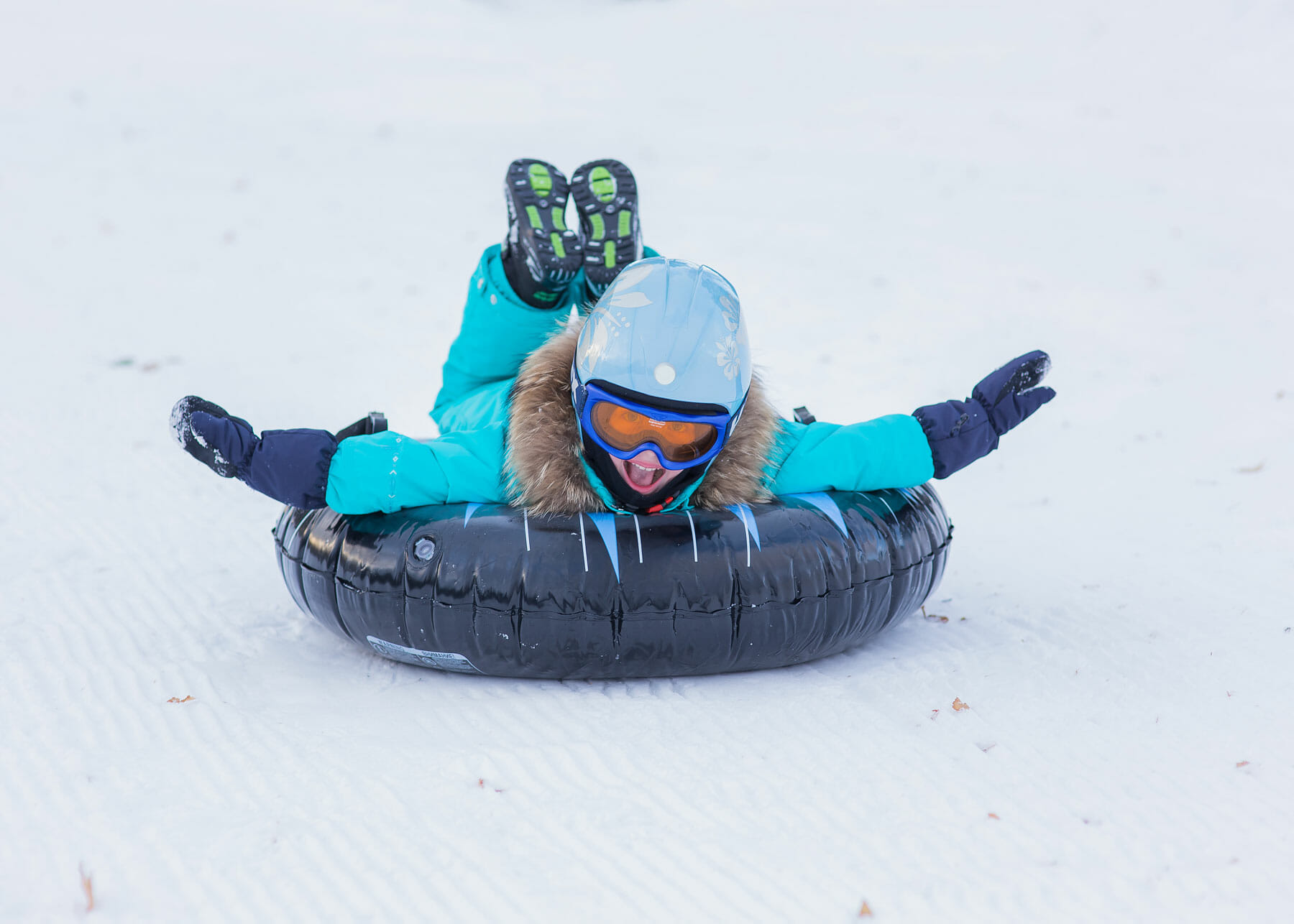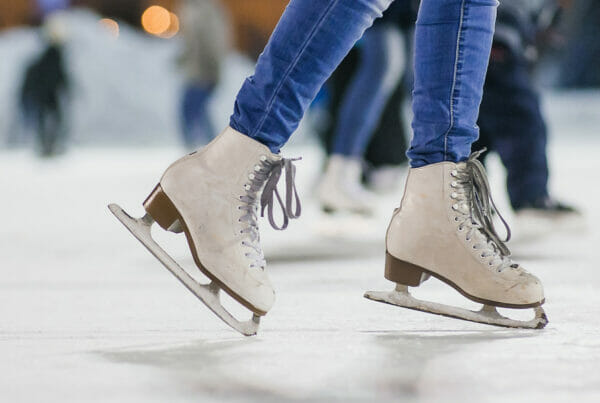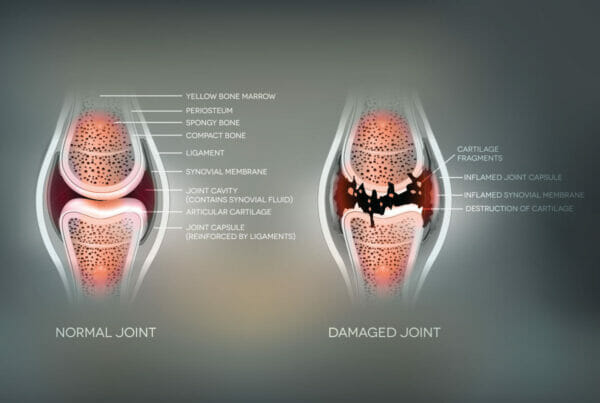Safe Sledding: How to Prevent Sledding Accidents & Injuries
Don’t let safety slip away from you when sledding. The snowy slopes you shred on your sled are likely smaller than ski runs. However, they still deliver enough speed to cause serious injury in a sledding accident.
Sledding and snow tubing accidents injure thousands of children and adults every winter. Here’s a rundown of some common sledding injuries and tips on staying safe while sledding and tubing.
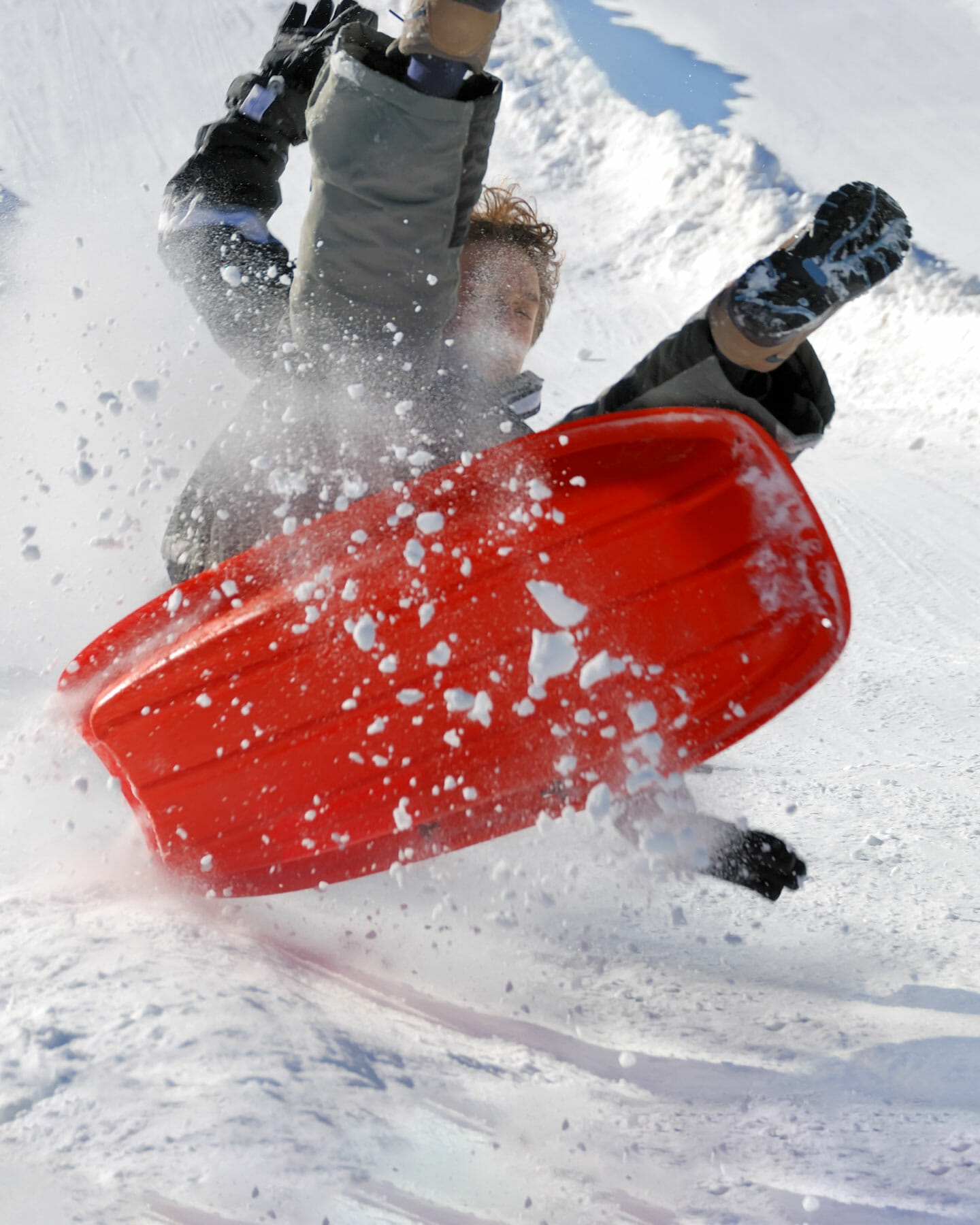
Is Sledding Safe?
Sledding can be a safe, fun winter sports activity. However, it can also become dangerous if you get careless. As many as 20,000 children per year get treated for injuries caused by sledding.
Compiling accurate sledding accident statistics doesn’t work well because few people report an accident unless it includes an injury. Recent sledding injury statistics suggest that sledding-related injuries declined between 2008 and 2017.
As safety equipment continues improving, people spread awareness of the potential dangers of sledding, and we all stay vigilant in following safety tips, we can keep those numbers moving in the right direction.
One way to help avoid injuries is by knowing the kinds of injuries to expect.
Common Sledding Injuries
Sledding accidents can result in an injury to almost any part of your body. They can range from bumps, bruises, and abrasions to more severe injuries.

Sledding Head Injuries
Head injuries are among the most common types of sledding injuries. Colliding at high speed with objects or other sledders frequently leads to concussions.
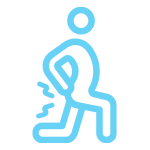
Sledding Back Injuries
When the speed of your sled gets away from you, you can end up getting tossed around. Flailing in all directions can lead you to fall and bruise your tailbone. If thrown violently enough, you could even suffer whiplash.

Injuries to Limbs
Sledding crashes can cause fractured joints or bones, especially in the wrists. A broken wrist usually happens with sledding when a sledder reaches out their arm to brace themselves against a fall or collision. Sledding falls can also commonly cause dislocated knees or shoulders.
With these common sledding injuries in mind, let’s look at avoiding them.
Safe Sledding Tips for Beginners
These simple tips for sledding safely can help you avoid collisions and the injuries that come with them.
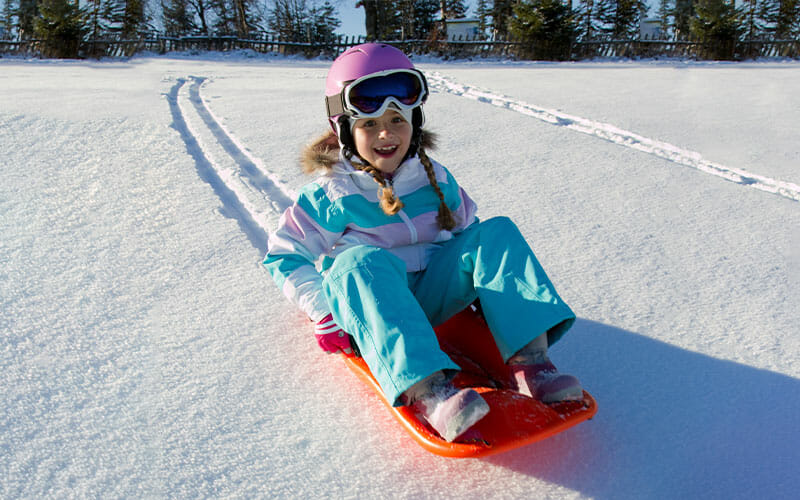
How to Sled Safely
- Sled on a modern sled, preferably with steering and brakes.
- Sled with a helmet on.
- Sled facing forward.
- Sled sitting up or kneeling, not on your belly.
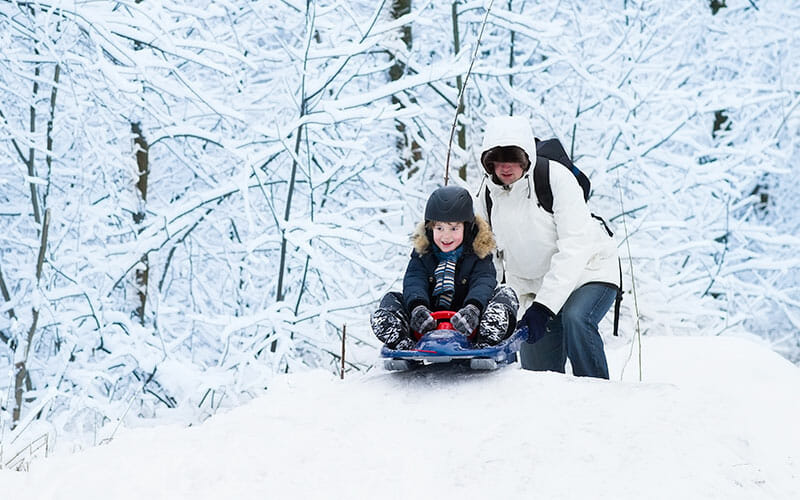
Where to Sled
- Sled on a hill you can handle.
- Sled on hills free of debris and ice.
- Sled on hills with long, clear runways at the bottom.
- Sled on hills away from trees, roads, or buildings.
- Sled on hills with other responsible sledders only.
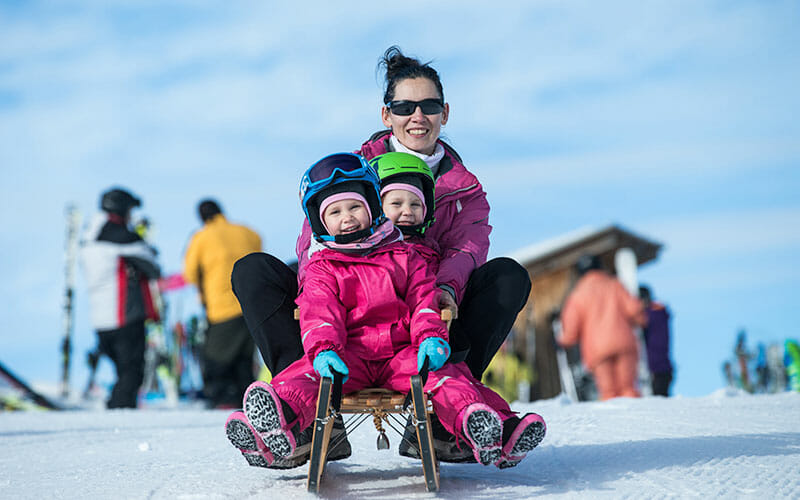
When to Sled
- Sled when you’re sober. No drunk sledding.
- Sled during the daylight.
- Sled with adult supervision if you’re under 12.
- Sled accompanied by an adult if you’re under 6 (and good job reading “accompanied” at your age).
Tubing vs. Sledding
Tubing is sledding on a donut-shaped rubber or plastic cushion. The cushions are usually inflatable, like an old tire inner tube. Snow tubes typically go faster than sleds and provide almost no steering. Virtually all the dangers of sledding get amplified with a tube.
How Dangerous is Tubing?
Snow tubing accidents present more danger than sledding because of its faster speeds and lack of rider control. It results in more injuries, and those injuries are also more severe. Some reports show average injuries from snow tubing accidents to be twice as severe as average skiing injuries.
If the danger is part of the thrill for you, at least take a few precautions.
Snow Tubing Safety Tips
Follow all the same sledding safety tips listed above, plus these additional tips to help reduce snow tubing injuries.
- Limit the run to just one snow tuber at a time.
- Never snow tube alone.
- Work with other snow tubers to monitor every tuber’s entire run.
- Never cross the run.
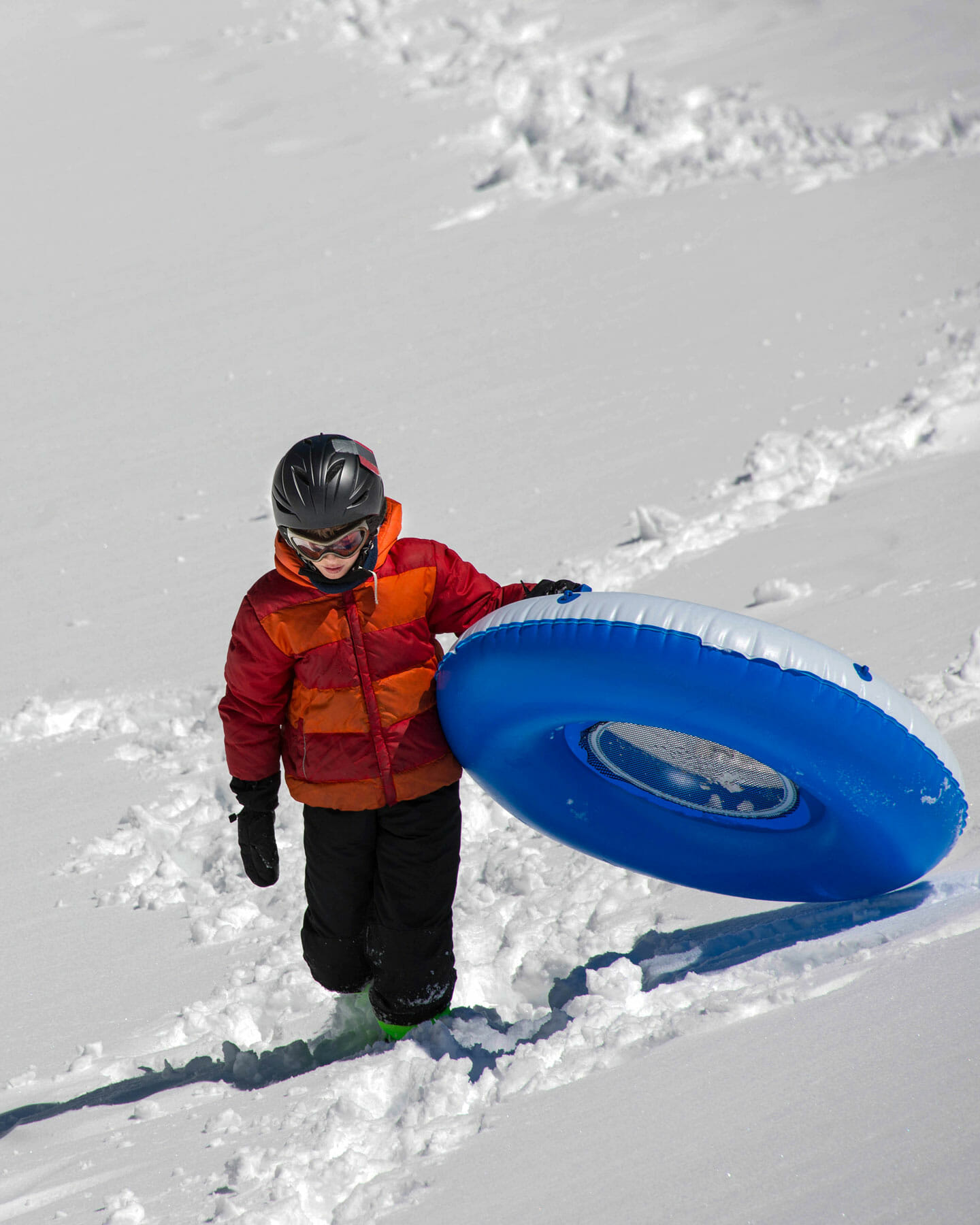
Snow Tubing and Sledding Safety FAQs
Can you go sledding while pregnant?
Sledding while pregnant is not recommended. If you decide to risk it, stay safe, keep it early in the pregnancy, and don’t go on steep hills.
How many people can ride in a snow tube?
Standard snow tubes are designed for one rider per tube. If a child is too small to handle their own snow tube, they won’t be safe riding with an adult either. However, you can find snow tubes designed for two riders. They have two donut shapes linked together. Use the two-person tubes if you must tube in tandem.
How do I get back to the top of the hill safely?
If you’re sledding or snow tubing at a resort, you may be able to ride a lift back to the top of the hill. If so, follow the designated signs to do so.
Most sledding or snow tubing hills don’t have lifts. It will be up to you to walk back to the top. Stay to the sides of the hill as you hike back. Leave the middle for the next rider. Take small steps, so you don’t slip. Carry your tube or sled up the hill, don’t try to slide it.
Take a rest before hiking up the hill. If you lose your balance from fatigue just before the top, you could fall all the way back down the hill.
Do snow tubes have a weight limit?
An average snow tube can handle up to about 300 pounds. You may need a specially designed tube or sled if you’re heavier than that. Also, the more you weigh, the more mass you have. More mass means you build more momentum coming down the hill. With more momentum, you need a longer stopping distance.
Now you know about common sledding and snow tubing injuries and steps you can take to avoid them. But, there’s another thing you can do to help reduce the risk of injury. Prepare your body for the winter sports season ahead of time.
Is there a height limit for safe sledding?
Children should be about three feet tall before they sled or snow tube alone. Usually, they have to be that big to have the mass and strength to balance on the sled.
There is no height limit on the upper end, but there is a weight limit.
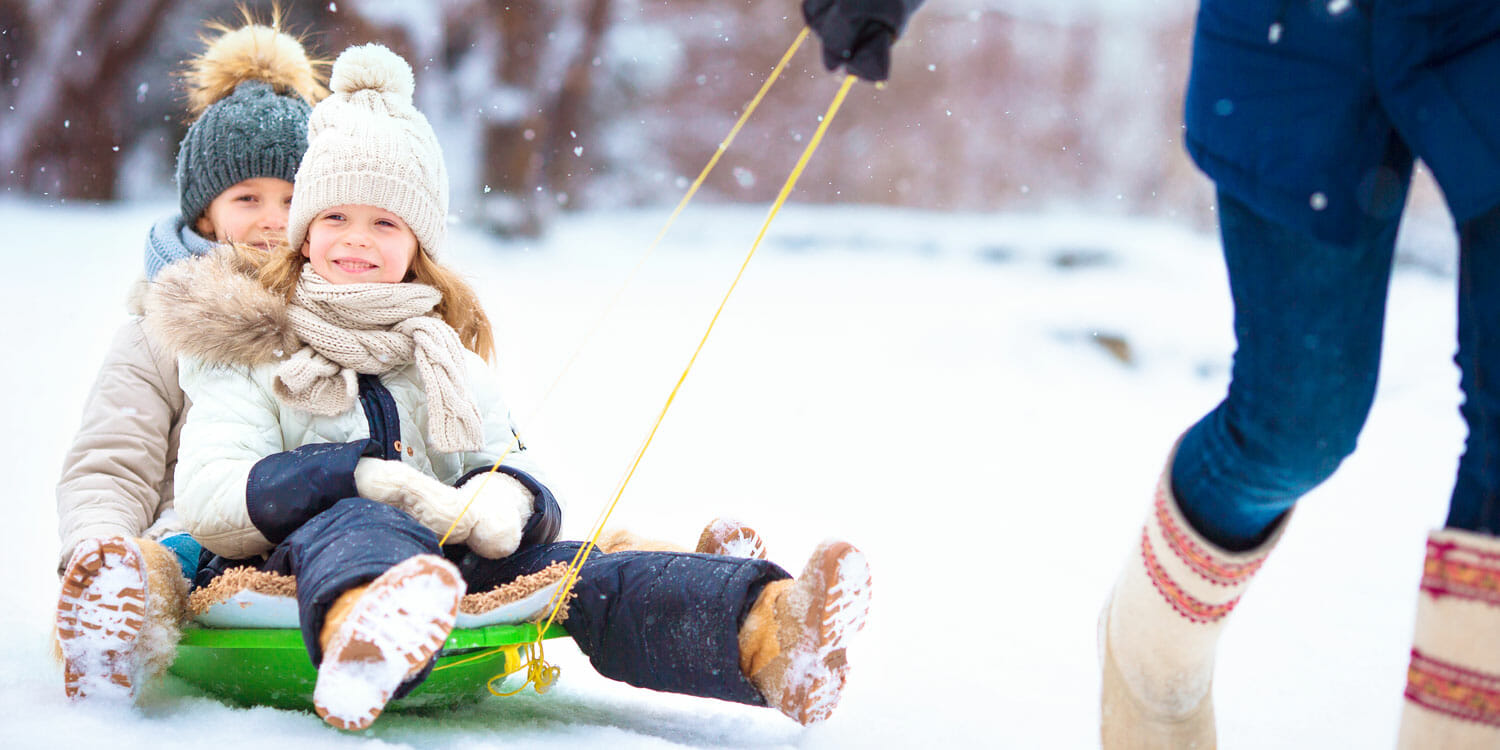
Prepare for Sledding Season with a Check-In at RPT
Keep your kids and yourself safe when you get out in the cold with Registered Physical Therapists. Our team of physical therapists can perform a professional evaluation to help you prepare for your favorite winter sports by helping you train and condition to avoid injury. Our success stories from clients speak for themselves; when you’re ready to get started, we can help you.
We have several locations throughout Utah, making it easy for you to get in and get treatment when you need us. Contact us today to schedule an appointment when you’re ready to get started on your preparation or healing journey.
Sledding accidents can result in an injury to almost any part of your body. They can range from bumps, bruises, and abrasions to more severe injuries.


